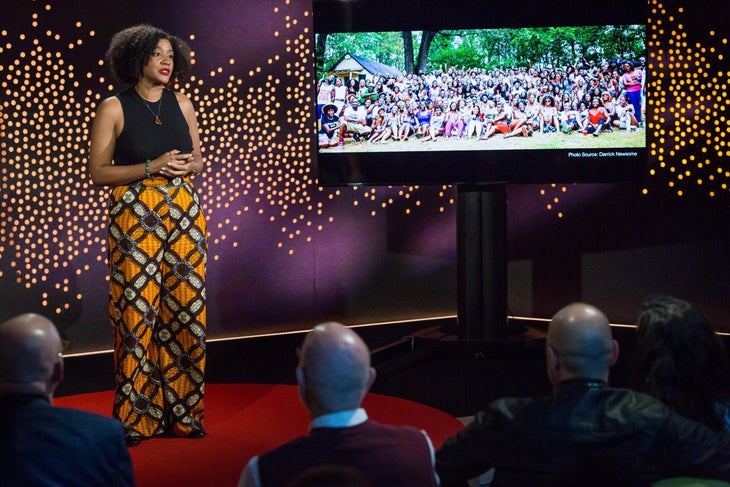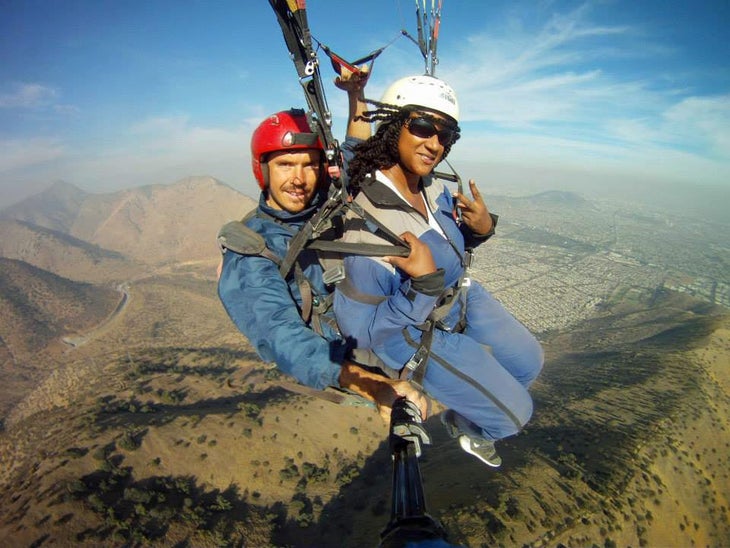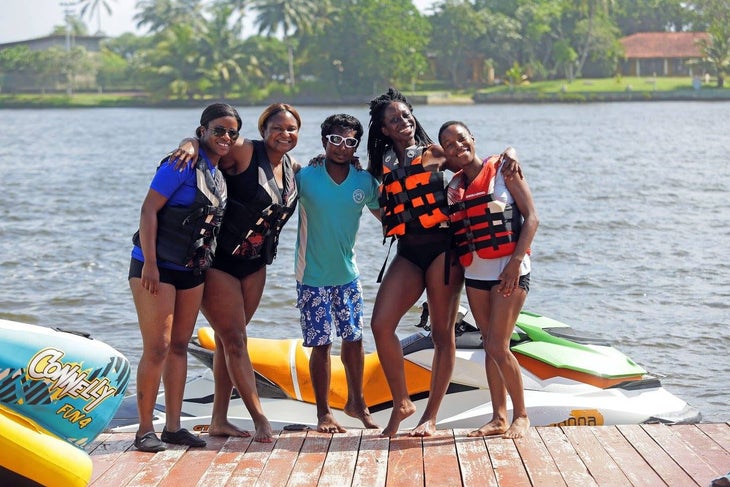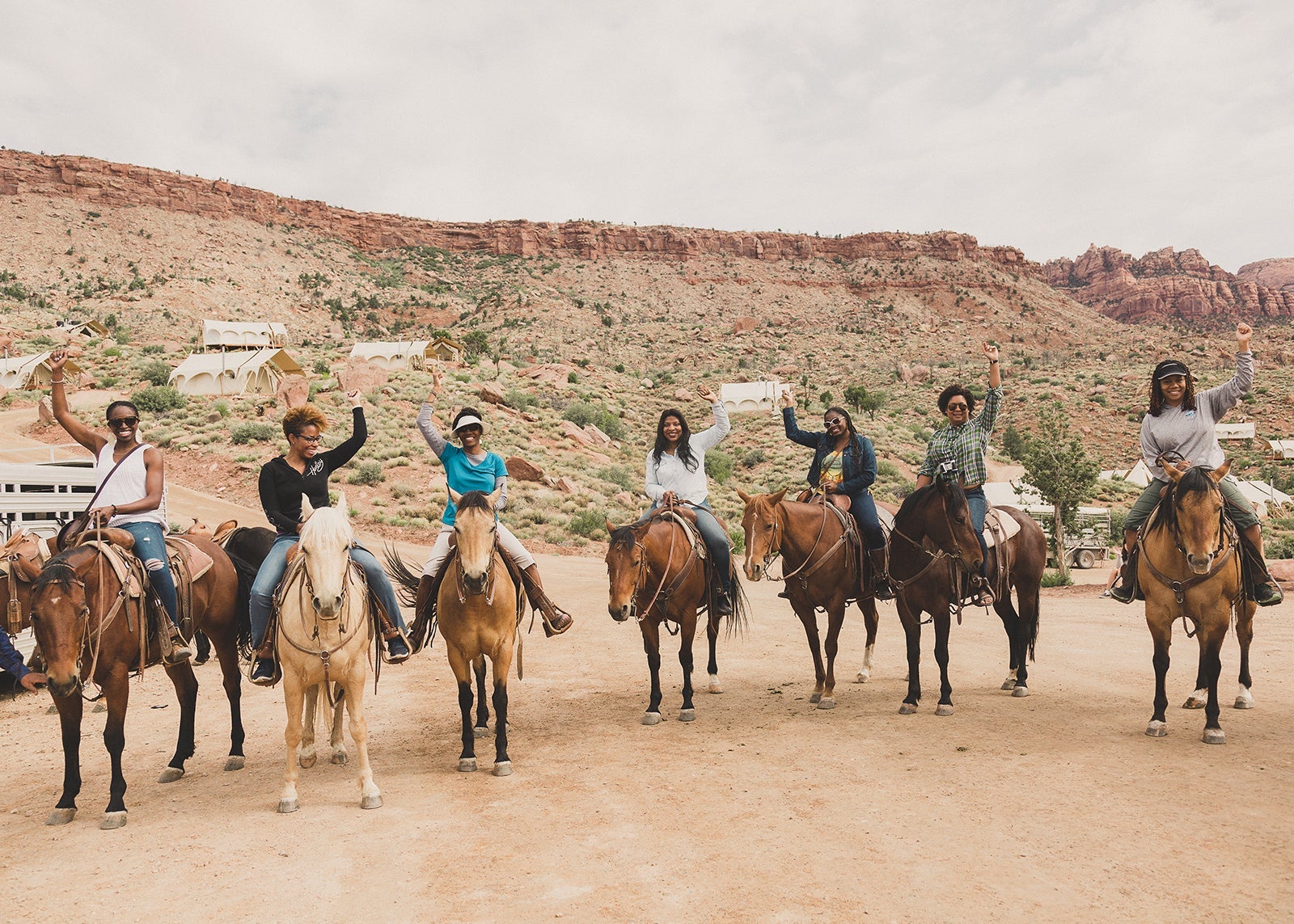Black Americans now spend $48 billion a year on travel and are among the fastest growing segments in the U.S., according to Mandala Research. And the strongest influencer of that trend is black millennial women.
#BlackGirlMagic—a social media movement cultivated by black women to celebrate one another’s accomplishments—influences mainstream America and is estimated to drive black spending power to $1.5 trillion by 2021, according to The Nielsen Company report, “African-American Women: Our Science, Her Magic.”
One problem: the outdoor and travel industries aren’t marketing to black people.
“Black people like the outdoors and educational experiences, but we’re not seeing ourselves in the marketing for these programs,” said Evita Robinson, founder of Nomadness Travel Tribe, a social media and travel group that empowers women of color.
As the outdoor industry steps beyond a dialogue about diversity and strategically builds partnerships that champion inclusivity, marketing to black women should be a top priority.
Here are six actionable ways for outdoor brands to market to women of color.

1. Know the Community
African American females are trendsetters and brand loyalists who support ecological sustainability. According to the aforementioned Nielson report, 59 percent of black women pay more for products that are environmentally safe, and 74 percent recognize that global warming is a serious threat.
The first step to start marketing to women of color, says Robinson, is for outdoor industry brands and retailers to research the subset communities within their selected target market.
For instance, Nomadness members include 20,000 black and brown travelers and expatriates from around the world. Eighty percent are female and millennial (25 to 45 years old). The travel group’s outdoor adventures include everything from whitewater rafting in the Dominican Republic to hiking in Nicaragua, sailing on a catamaran in the Turks and Caicos, and Running of the Bulls in Spain.
Other organizations for adventurous black women include Girls Going Global, Bucket List Living, Travel Noire, and Oneika the Traveller.
“Marketing practices shouldn’t be same with two different age brackets,” Robinson said. “What will work on a 17-year-old will not work on a 45-year-old and shouldn’t.”
2. Initiate Conversation
Start a dialogue with those communities and approach the brand founders. Pitch a marketing campaign, or an advertisement to make your company visible to those members.
“It is seen as a positive when [brands] take the initiative to approach [black and diverse] communities,” Robinson said. “Say, ‘Diversity is a priority in our company’s DNA, and we want you to be a part of it.’ There’s a sense of humility that’s endearing and gives way for honest, open conversation as to how [partnership] can be maneuvered,” she said.
Prioritize both sides of the coin: ask how the partnership can be mutually beneficial.
“You can propose sponsored posts or a blog write-up to showcase a particular vendor or activity in exchange for the facility or experience,” said empowerment coach Sonjia Mackey, founder of the Bucket List Living (@bucketlistbeasts), an adventure travel group for black women and a spin-off of Nomadness.

3. Authentic Marketing
Connect with people of color in your company’s region. Ask what it’s like to be a person of color—who travels, recreates, or adventures—in that specific destination. Furthermore, invite them to do a focus group for your product or marketing development.
“For outdoor campaigns, find and incorporate historical references that would emotionally resonate with blacks,” Robinson said.
We still have a long way to go in the outdoor industry, but a number of leaders say we are getting better at diversity. In this opinion piece, Yoon Kim agrees.
Also, authentically represent the experience, but be truly inclusive. “[The marketing] should not just be diverse with black women—put everyone in there. Show that it’s not just a one-off,” Robinson said.
4. Celebrate Cultural Nuances
Nomadness members are reluctant to join guided outdoor experiences that include 90 percent white travelers.
“There is a disconnect with cultural nuances of how we travel, and the things we would worry about,” said Robinson. As an operator, find solutions to bridge those differences.
For instance, gift bags for a glamping, camping, or overnight excursion should include natural, ethnic hair care products. African Americans contributed $54 million—86 percent of the total dollars spent—to the ethnic hair and beauty market in 2017, The Nielsen Company reported.
“[Black women] can’t have shampoo that forms suds, which strips our hair, because it’s porous and isn’t oily. We need moisturizer in our hair everyday,” said Robinson.
In general, steer clear of “love and hip-hop speak,” in marketing, which can feed offensive stereotypes.
5. Prioritize Hiring Practices
If there’s no one of color in a position in the company, that’s the first problem, according to Robinson, who recommends hiring a black person to the human resources department.
Partner with people of color who work on the local tourism board or with a marketing group, tour operator, or brand in the industry. They will know where local black communities exist and will understand cultural nuances that are overlooked by outsiders.
“If you’re targeting diverse markets, you absolutely need those cultures in the levels of management that approve campaigns,” said Mackey. “You don’t get kudos if you miss the mark with your message and end up with social media nightmare,” she said, and pointed to recent snafus by Dove and H&M.

6. Establish Trust
Safety is a key priority for black women. They want to understand the threats in the local environment—such as wild animals—and to share mutual respect with their adventure companions, said Robinson.
“We want to trust the community that we’re with and know that we’re welcome, not just tolerated,” said Robinson, who suggested that marketing materials incorporate the voice of African American female influencers that the community knows and trusts.
Mackey agrees. “Black female travelers need to see [black] faces in marketing promotion, and they need to ask people they know and trust [about the experience],” Mackey said.
To point, Mackey’s annual “Mystery Trip”—when members arrive at the airport with zero idea of where they’re going—is a success, because her audience trusts her.
Mackey designs experiences that push members out of their comfort zone, including adrenaline challenges like scuba diving or sky diving and visiting places that are not historically occupied by black people.
“We were the only black people in Montana when we did our glamping trip. We stood out,” she said. By the end, the perspectives of her group had shifted.
“Everyone [in Montana] was so friendly and asked where we were from,” she said. “Someone anonymously paid for our breakfast. Any preconceived notions, anxieties and fears that women in our group had about traveling there were eased. And their feelings about Montana were definitely shared on social media.”
Ultimately, the leadership of entrepreneurs—such as Mackey and Robinson—helps to create opportunities for cross-cultural trust. That’s a true paradigm shift.


